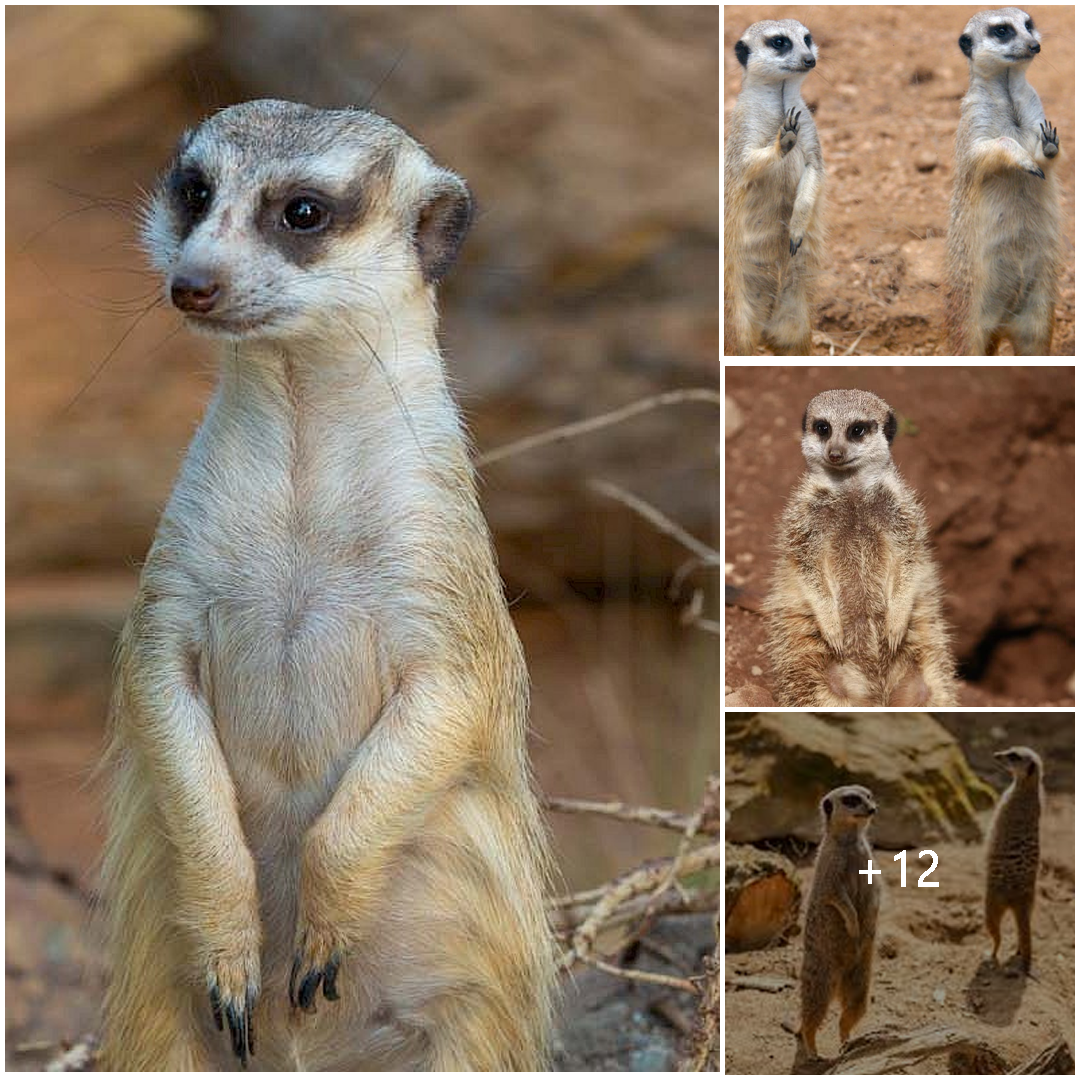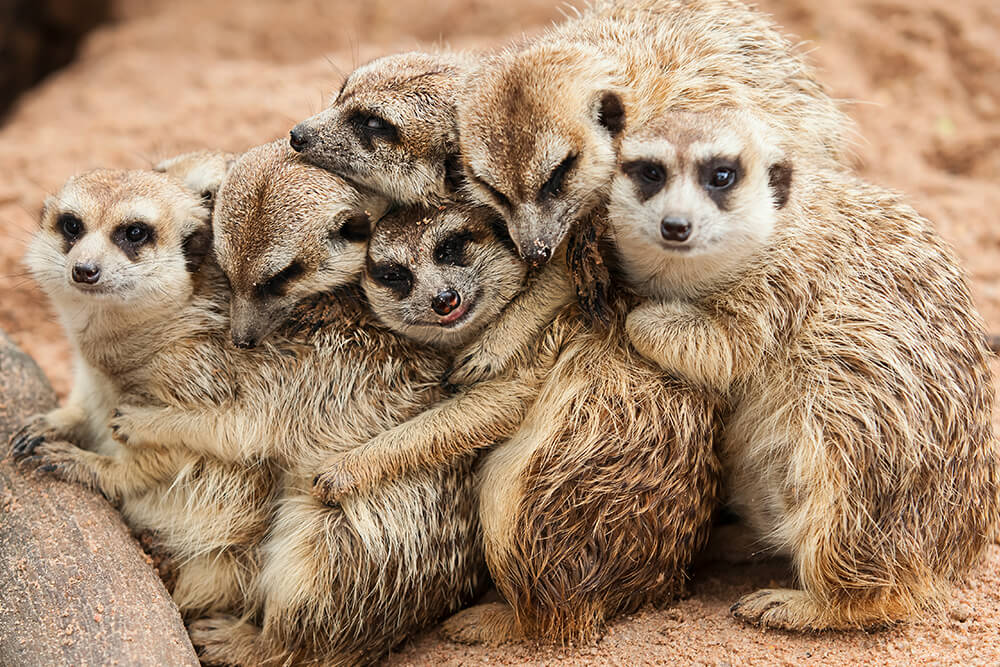
Meerkats: The Charismatic Suricates of the African Savanna
Meerkats, small mammals belonging to the mongoose family, are renowned for their charming appearance and fascinating social behavior. Found primarily in the arid regions of southern Africa, these endearing creatures have captured the hearts of animal lovers around the world. Let’s delve into the captivating world of meerkats and explore what makes them so special.
Habitat and Distribution:
Meerkats are native to the deserts and grasslands of southern Africa, including countries such as Botswana, Namibia, and South Africa. They inhabit open areas with sandy soils, where they can dig extensive burrow systems for shelter and protection from predators.
Physical Characteristics:
Meerkats are small, slender animals with long bodies, short legs, and a distinctive upright posture. They have dark bands around their eyes, which act as natural sunglasses to reduce glare from the sun. Their fur is typically a sandy or grayish color, providing camouflage in their arid habitat.
Social Structure:
One of the most remarkable aspects of meerkats is their complex social structure. They live in groups called mobs or clans, which can consist of up to 30 individuals. Within the mob, there is a strict hierarchy, with dominant breeding pairs leading the group and subordinate members assisting with tasks such as babysitting, foraging, and sentry duty.

Cooperative Behavior:
Meerkats are highly cooperative animals, working together to ensure the survival of the group. They take turns standing guard, scanning the surroundings for potential threats such as predators or rival meerkat groups. Their sentinel behavior is crucial for the safety of the mob, allowing them to forage for food without constant vigilance.
Diet and Foraging:
Meerkats are omnivores, feeding primarily on insects, spiders, scorpions, small reptiles, and occasionally fruits and seeds. They have keen eyesight and a strong sense of smell, which help them locate prey in the sandy soil of their habitat. Meerkats use their claws to dig for food, often cooperating to unearth buried prey.
Conservation Status:
While meerkats are not currently considered endangered, they face threats from habitat loss, predation, and human encroachment. Conservation efforts focused on preserving their natural habitat and reducing human-wildlife conflict are essential for ensuring the long-term survival of these charismatic creatures.
Conclusion:
In conclusion, meerkats are fascinating animals with a unique blend of charm, intelligence, and cooperative behavior. Their tight-knit social structure and remarkable adaptations to their arid environment make them a symbol of resilience in the African savanna. By studying and appreciating these captivating suricates, we gain valuable insights into the complexities of animal behavior and the importance of conservation in preserving our natural world.





